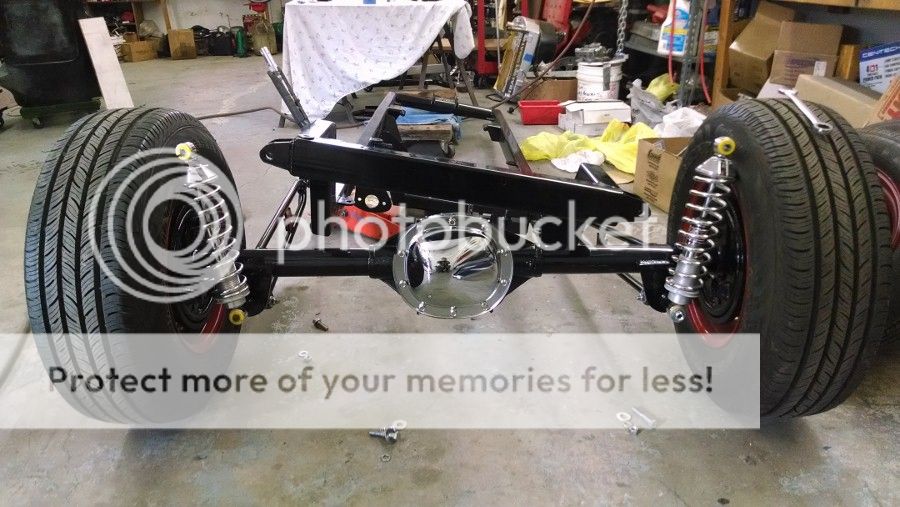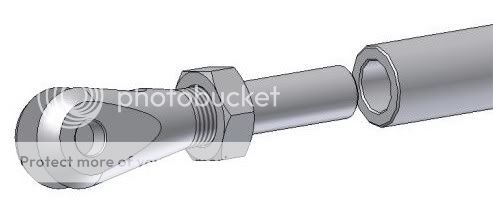Couple things I see.
1 - you may need some "misalignment" spacers on the front mount, that will allow that heim to twist a lot more. If you disconnect the rear bolts, and twist that joint, you will probably see its hitting very early in the rotation.
2 - those hiems bolted like that on the rear probably only move side to side, which is what the panhard bar will prevent,so they probably won't be any different then the clevises. They do sell clevises with 1/2 holes, they just cost a bunch more, I picked up one up at speedway, for $19!
http://www.speedwaymotors.com/AFCO-10491-Steel-Clevis-5-8-18-RH-Male-1-2-Hole-3-8-Slot,23917.html
Those rodends, might be another option to give you a bit of movement in the rear. Though you will get the single sheer argument again.
Oh yeah, that front mount will make a great spot for a step!







